If you teach in a state that is part of the WIDA consortium, you may be familiar with the WIDA English Language Development (ELD) Standards. Whatever your teaching role, the standards can help you lesson plan, with objectives for both grade-level content and academic English. WIDA updated the standards framework in 2020 from the previous 2012 edition. So each state is implementing the 2020 standards according to its unique plan and timeline. Your state may have some training available to introduce you to the new standards. Additionally, WIDA has some wonderful free workshops available through their website.
What I love about the 2020 WIDA standards is the focus given to building on the strengths of multilingual learners. The standards also provide clear connections to content-area teaching. They aim to support the language needed for subject area learning. With this complete resource, teachers in varied roles can collaborate for equitable, inclusive instructional planning.
Disclaimer: This three-part blog series will supplement the training already available through WIDA. I encourage you to take part in the essential training offered by WIDA, as well as your state. The WIDA 2020 standards components referenced and some images shown in this series are shared from and credited to WIDA’s website.
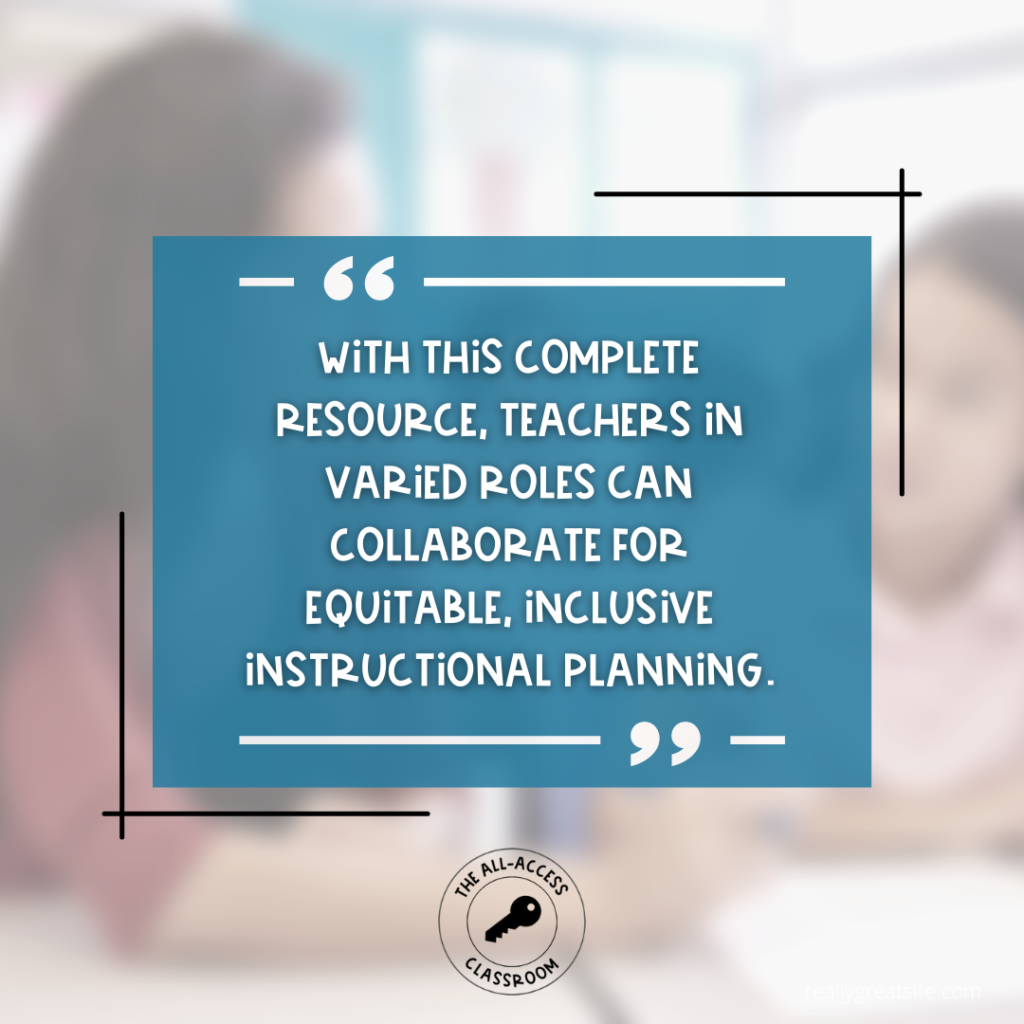
Why Lesson Plan With Objectives for Content and Language?
So you’re a general education teacher, and you’re a pro at writing lesson plans. You know the subject-area content like the back of your hand. You’re good at preparing for a broad range of instructional topics. Or you may be an EL specialist, looking for opportunities to support content learning for your students.
It’s likely that you already value the role that language and communication plays in your class learning activities. You know that in order to engage in a lesson, students need to actively listen, speak, read, and write. Clearly, they communicate differently in your lessons than they might in other contexts. They need academic language.
We know that our students require explicit teaching of academic English. They need opportunities to practice and a safe environment to express their thinking. For all learners– especially our multilingual learners–the empowerment that comes from wielding functional language is great. With this in mind, what is our responsibility as educators who want to provide equitable access to learning for all students, regardless of English proficiency? We need to intentionally lesson plan with objectives for both content and language.
Sharing these complementary objectives with students will provide clarity, goals, and support for those who are learning content and language at the same time.
The WIDA 2020 Standards Are a Great Resource for Finding Relevant Language Objectives for Lesson Plans
So how do you, as the teacher, know how to write language objectives for lesson plans? You don’t need to be a language specialist or ESL teacher to do it. This is where the WIDA 2020 ELD Standards Framework becomes an incredibly helpful tool. WIDA researchers have carefully studied the many ways that students use language for learning. They created an organized collection of unique language skills used in gen. ed. instruction. Simply put, teachers can treat the standards as a kind of “handbook” that points to “good fit” language objectives.
As you get to know the layout and structure of the framework, it will become your go-to resource when you need language objectives for lesson plans. The writers of the standards truly designed them with teachers in mind. However, it can take some time to understand and grow comfortable with using them. My hope is that this blog series can be of some help to you in this process. Let’s take a look.
Navigating the WIDA 2020 Standards
First, I’ll share a very broad overview of the entire framework.
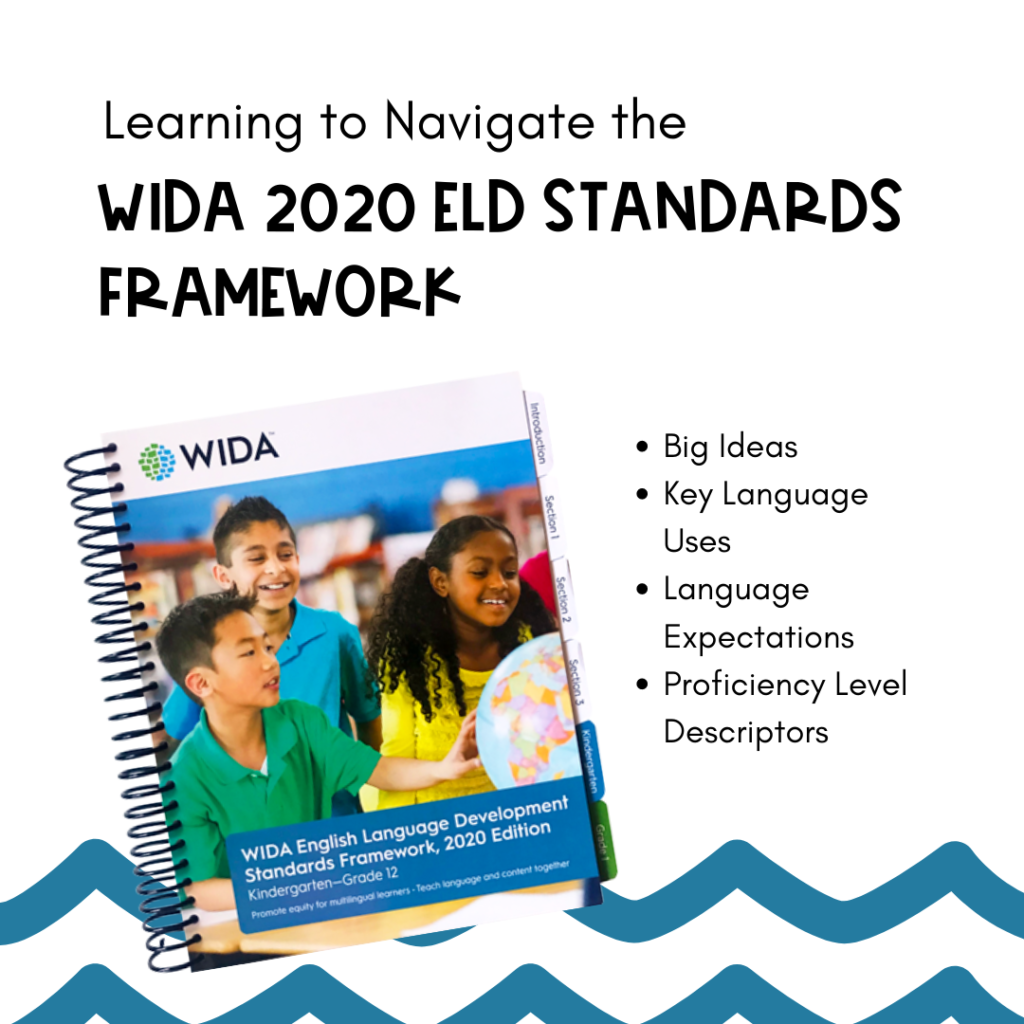
Big Ideas and Standards Statements
Arching over everything WIDA produces are some core beliefs about multilingual learners. These “Big Ideas” are: equity, integration, collaboration, and a functional approach.
WIDA developed the ELD standards on the foundational understanding that students learn English best in an integrated, functional setting. English is to be an addition to their existing linguistic repertoire. Another core belief is that with a school culture of equity and collaboration, diverse learners can have access to grade-level content.
Along with the Big Ideas, the ELD standards are organized around 5 statements that reflect the importance of using language to communicate and make meaning for:
- Social and Instructional Purposes (to be applied within the other academic areas)
- Language Arts
- Mathematics
- Science
- Social Studies
Key Language Uses
The next “tier” or “layer” of organization is the key language uses. They define the purpose for which learners use academic language in a given lesson or unit activity. WIDA has determined that virtually all language in the classroom falls under one of four key language uses:
- Narrate
- Argue
- Inform
- Explain
Note that in a single lesson, multiple key language uses may be employed, and they may coincide and overlap naturally. However, for simplicity in planning, teachers may choose to be selective in identifying a prominent language use within a lesson or unit.
Language Expectations
Next, the language expectations may be considered as the main goals or “language standards” that align with content objectives. There are several parts of a language expectation that help us locate and define the “best fit” for our lesson/unit. All six of these elements are visible on a given page of standards within the framework. This makes it easy to navigate to what is needed:
- Subject area (related to the ELD Standards Statements) and Grade level cluster
- Key Language Use and “Mode” of Communication (listening and reading are represented as “interpretive,” while writing and speaking are the “expressive” modes of communication)
- Language Expectations: Include Functions (common ways students might use language for specific academic purposes) and Features (specific English language resources students may need to produce the needed language)
- Proficiency Level Descriptors (what language for certain purposes looks like for students at various developmental proficiency levels)
The First Step: Identifying the Key Language Use
For this blog post (part one of the series), I want to leave you with some clarity on how to identify the key language use that is most prominent in your lesson or unit. To model the process for you, here is a bit of a “think aloud.” These are questions that I ask as I enter the process of using the WIDA standards to plan objectives for my lesson:
- Looking at my content standard, objective, and outcome/assessment task, ask:
What listening, speaking, reading, or writing activity stands out as being most prominent, most essential for success, or most required for student understanding/engagement in the lesson?
Is the purpose for using this language to:
- Narrate – tell a story or historical series of events
- Inform – share facts (describe, compare, organize information, etc.)
- Explain – give an account of how or why something happens
- Argue – defend or justify a claim using reasoning and evidence
- Which communication “mode” will students be in for the majority of this activity?
Is it listening, speaking, reading, or writing? Interpretive or expressive?
Once you have identified your key language use and language mode, you are ready for the part that is the most fun (in my opinion). The standards page you’ve found your way to will point you to the appropriate language function and feature for your lesson. We’ll dive into that in part two of this blog series!
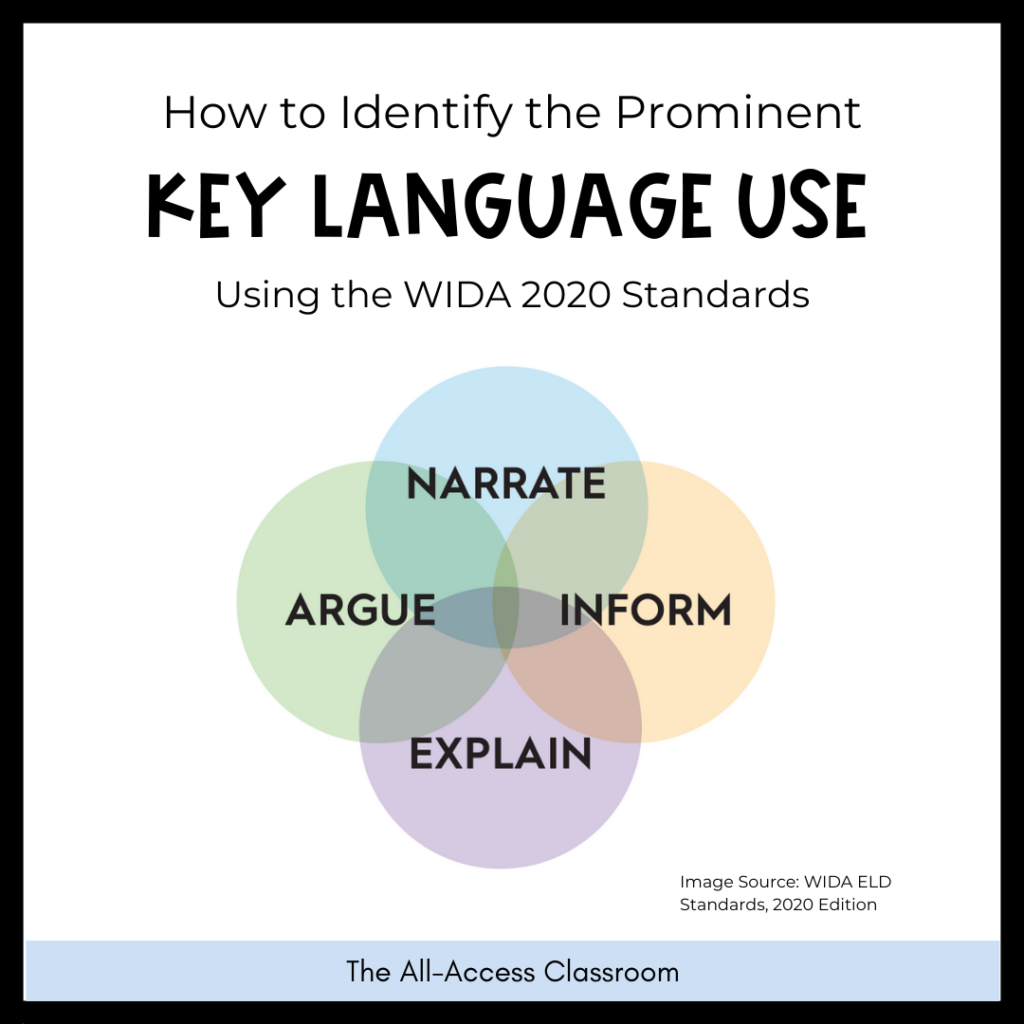
Examples of Identifying Key Language Uses
At this point, I encourage you to take a look at the WIDA ELD standards that apply to your grade level. You can print those for your grade level “cluster” for free on WIDA’s resource library. Following are two practical examples of what it looks like to identify key language uses.
Let’s say I am planning a Science lesson for first graders. The content objective is that students will explain what causes a change in the motion of an object (push or pull). I want them to view a picture and complete a sentence.
As far as language goes, I can identify that the most prominent communication happening in this task is writing. Students will write to explain why an object’s motion changes.
So my key language use is: EXPLAIN (why the object’s motion changes due to a push or pull)
And the mode of communication is: WRITING/EXPRESSIVE
__________________________________________
Or perhaps my fourth graders in Social Studies are creating presentations. They will be sharing the historical significance of public or private buildings in our state. The most prominent communication skills here are writing (the slideshow) and reading aloud. I might create two language objectives for the unit.
My key language use for these will be: EXPLAIN (how or why the buildings are historically significant)
And the mode of communication is: WRITING and READING/EXPRESSIVE
Fairly simple, right? Try this with some of your upcoming lessons! Ask yourself the prompting questions above to identify the key language uses for some learning activities.
Stay Tuned for More on How to Lesson Plan with Objectives for Content and Language
As much as I’d love to continue, I’ll let you “marinate” in this new information. Ready to learn the next steps– selecting “good fit” language functions and features? Check out the other posts in this series: Part 2 and Part 3 Would you like to stay up-to-date on new blog releases? Hop on my biweekly email list here.
Related Resources You Might Like
WIDA Standards Implementation Resource Bundle (lots of helpful templates!)
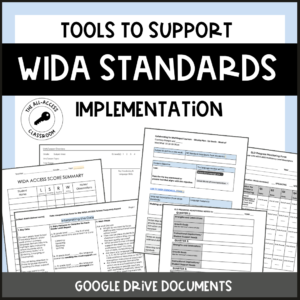
WIDA 2020 ELD Standards 3-Part Series (Part 2)
All-Access Instruction Course for Teachers (Includes a full WIDA 2020 training series!)
How to Write Objectives for Lesson Plans with Embedded Language Support- The All-Access Classroom


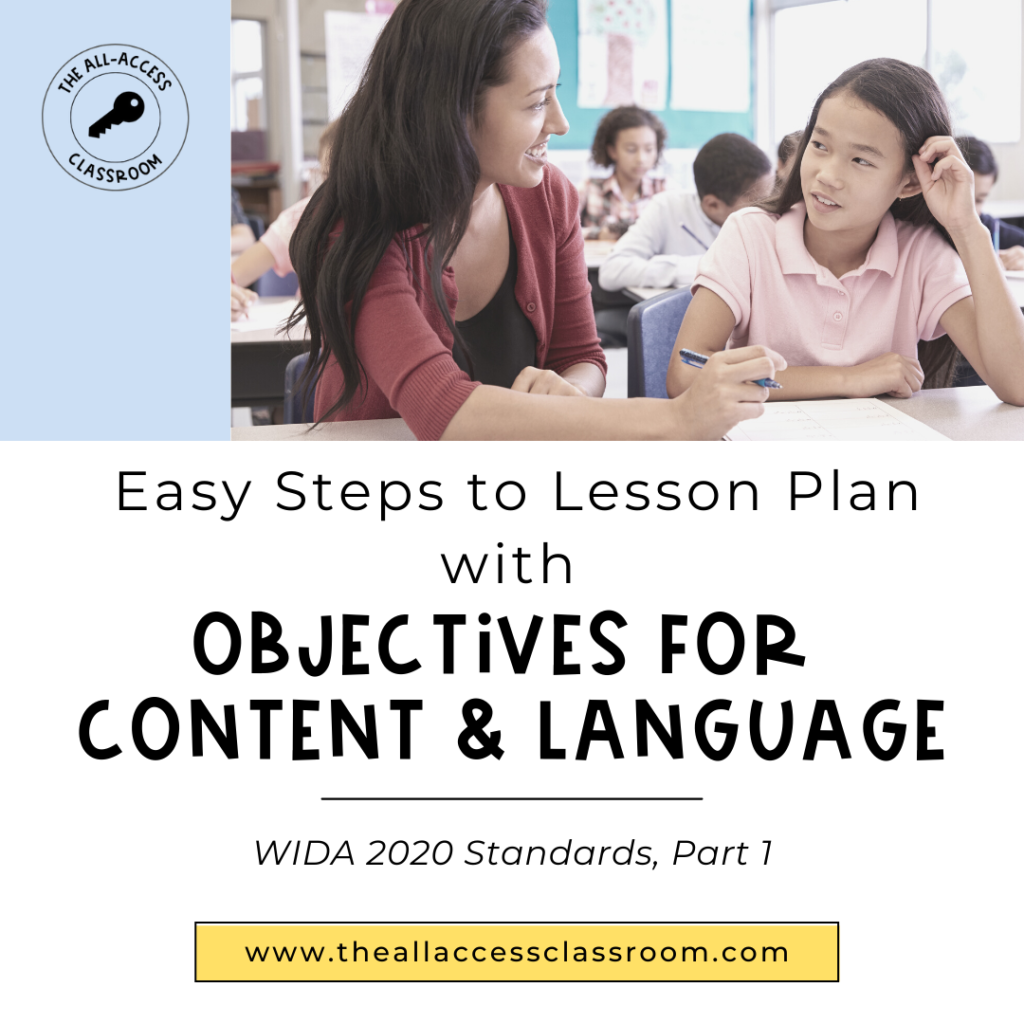
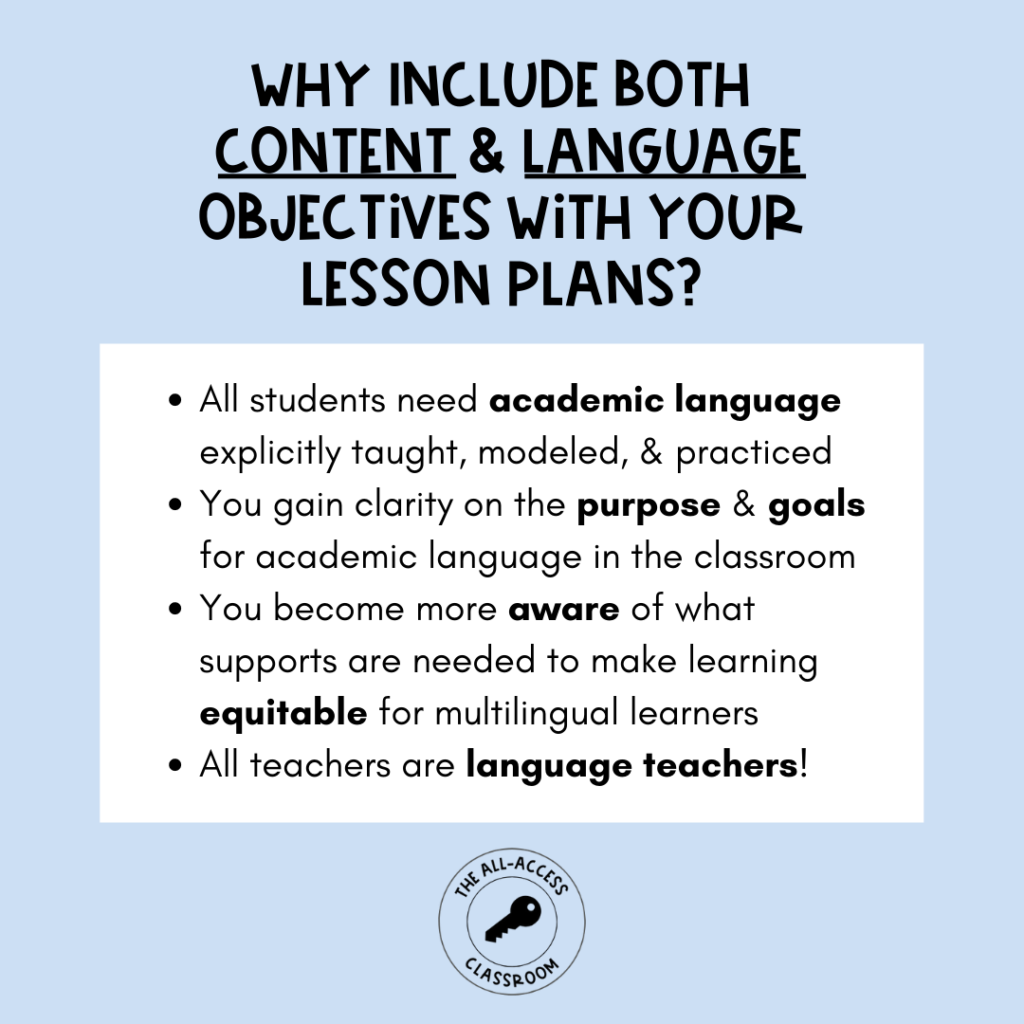
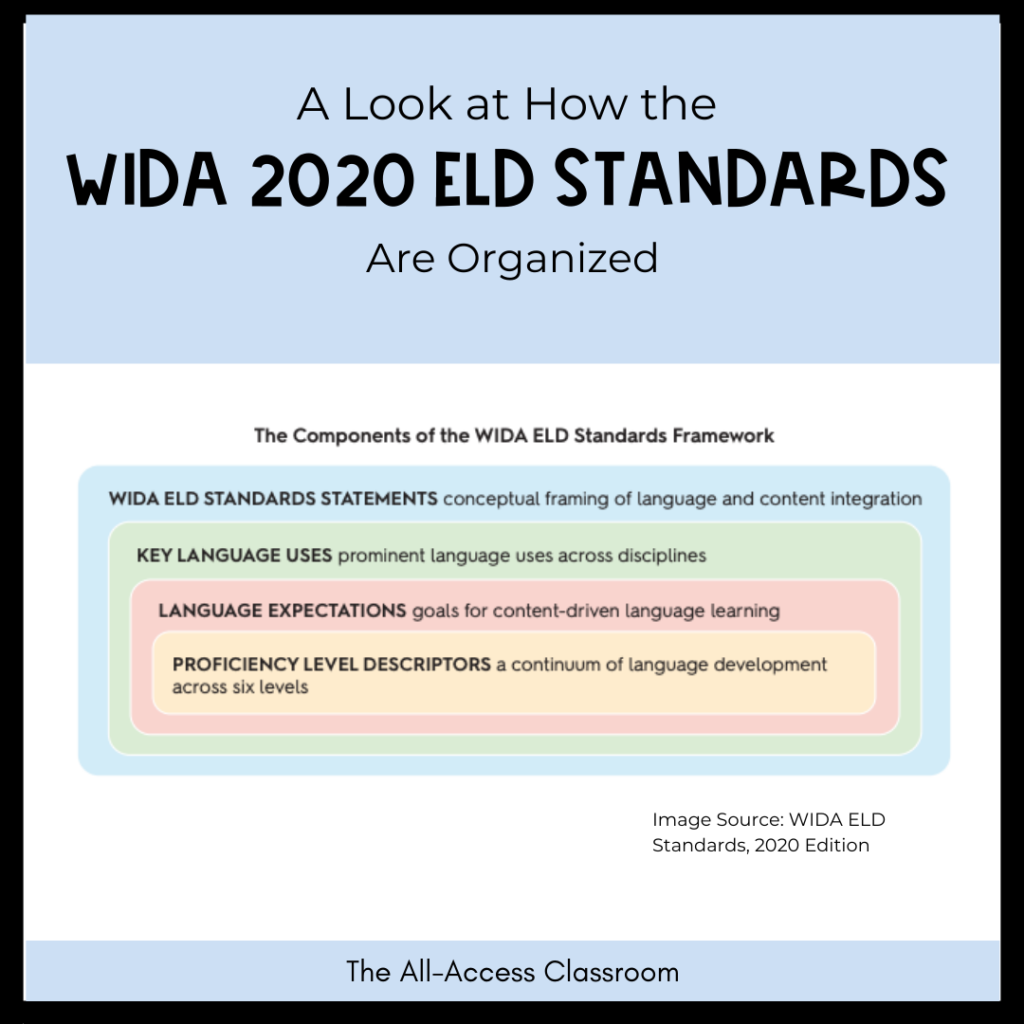
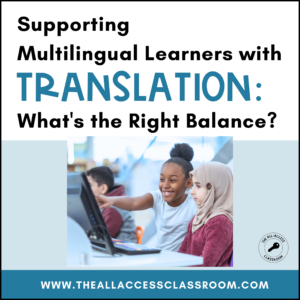
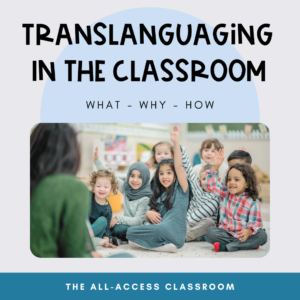
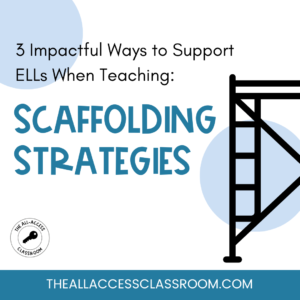
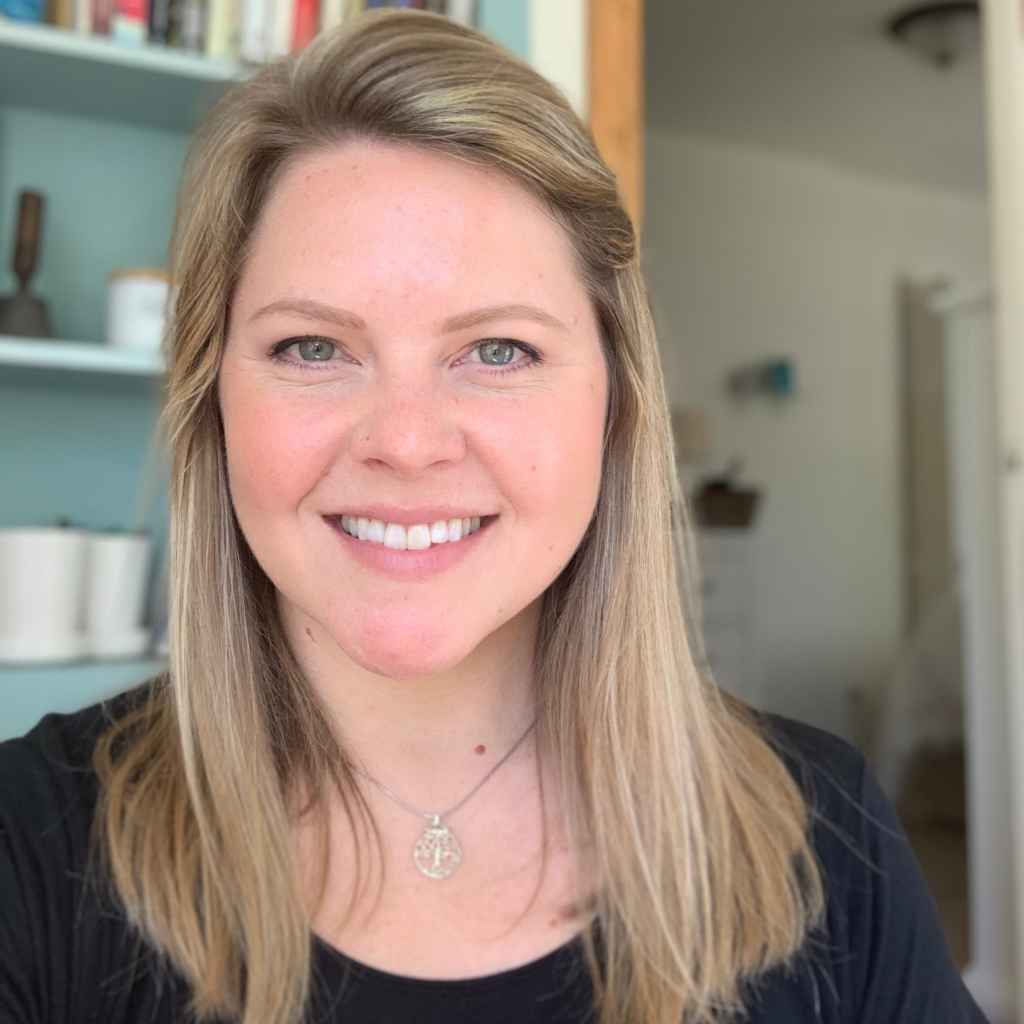
3 Responses